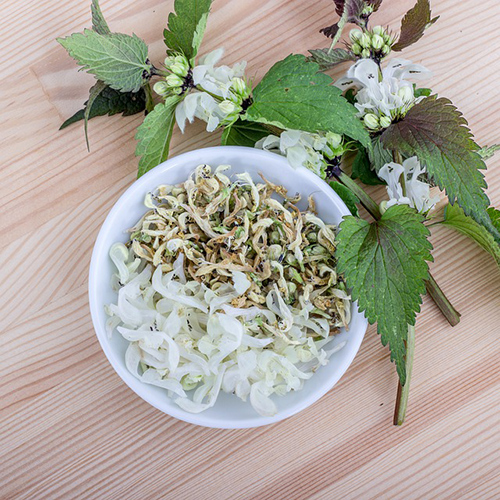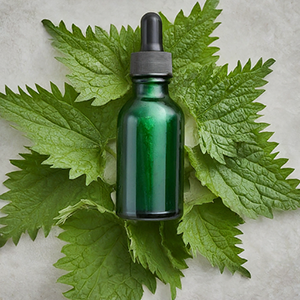Contents
The dead nettle plant is also called blind nettle because, despite resembling the common nettle, it does not cause nettle rash or harm those who touch it—as if people who do not harm were blind.

Dead Nettle Plant Scientific Facts
- Scientific Name – Lamium album L.
- Other Names – Blind nettle, white nettle.
- French – Ortie morte.
- Spanish – Ortiga blanca.
- Environment – It grows on roadsides and near populations throughout Europe and spread throughout America.
- Description—This vigorous plant of the Labiatae family grows from 20 to 60 cm high. Its flowers are white and lip-shaped, and it is different from the common nettle.
- Parts of the plant used medicinally – The leaves and the flower clusters.
Healing Properties

The dead nettle plant contains catechin tannins, flavonoids, and mucilage. Due to its tannin content, it has astringent, refreshing, and hemostatic (it stops hemorrhages) properties. Mucilage gives the plant its vulnerary and anti-inflammatory properties.
Its most important applications are the following:

- Gynecological disorders – Metrorrhage (uterine bleeding), dysmenorrhea (painful urination), and, as a rule, menstruation disorders. It stops excessive bleeding of the uterus and renders good results for leukorrhea (vaginal flowing) applied in the form of vaginal irrigations.
- Diarrhea and infectious colitis are generally caused by polluted water or meals.
- Externally applied, it heals wounds and bruises.
- Relaxing – In the form of footbaths, it alleviates tiredness or exhaustion after long walks.
How to use Dead Nettle
- Infusion with 15 to 20 grams per liter. Drink three or four cups daily.
- Compresses are soaked in the liquid obtained from a decoction made with 50 to 100 grams per liter of water and boiled for 10 minutes.
- Washings, baths, or lotions with the decoction mentioned above.
- Vaginal irrigations with this decoction, after well strained.
DISCLAIMER: All content on this website is presented solely for educational and informational objectives. Do not rely on the information provided as a replacement for advice, diagnosis, or treatment from a qualified medical expert. If you are pregnant, nursing, or have any preexisting medical concerns, talk to your doctor before using any herbal or natural medicines.
REFERENCES
- George D. Pamplona-Roger, M.D. “Encyclopedia of Medicinal Plants.” George D. Pamplona-Roger, M.D. Encyclopedia of Medicinal Plants. Ed. Francesc X. Gelabert. vols. 2 San Fernando de Henares: Editorial Safeliz, 2000. 633. Print.
- National Institutes of Health (NIH) https://pubmed.ncbi.nlm.nih.gov/22762298/
- Mount Sinai https://www.mountsinai.org/health-library/herb/stinging-nettle
- NIH https://pubmed.ncbi.nlm.nih.gov/31277247/
